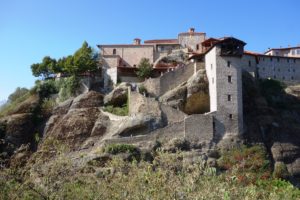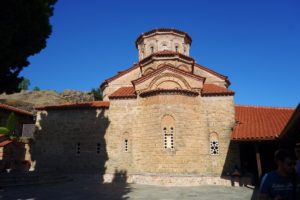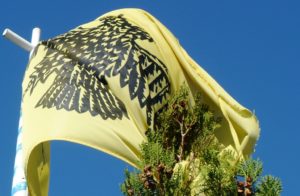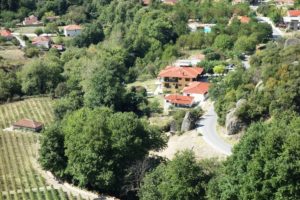We spent the morning rushing through breakfast so we could beat most of the busses visiting the monasteries. (Actually, the Greek members of our party had to do a lot more rushing than Danita and I. Our tour guide is not a person for rising early.) We managed to beat many, but not all, of the busses to the Great Meteora Monastery. We were able to move ourselves past two more busses by walking steadily up the steps while others stood to the side, panting.
Non-flash photography was permitted except in the Church itself. Unfortunately, the building is quite dark. The only pictures I could take were outside. This shows the outside of the Church portion of the building. All of the monasteries were rebuilt in the 15th century. We were able to visit the Church because it is no longer used for services. The monks moved their services to a less impressive area when the monasteries gained their UNESCO protected status. It was an appropriate thing to do, in part because the number of monks has dropped dramatically since WW II. Today, there are probably a dozen monks left. For at least some time, St. Nicholas (the smaller monastery we visited) was down to one monk. We saw a lot of 15th century frescos and icons. We heard explanations for all of it, but it didn’t all stick. Nonetheless, it was an amazing and impressive site.
Our other visit was to the St. Nicholas Monastery. It had far fewer visitors, and it was a much smaller Church area. These allowed us a much more intimate experience of viewing the paintings and icons. The monasteries fly the old Byzantine “Double Eagle” flag. This flag is quite popular in Greece, as a symbol of their connection to the past.





